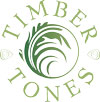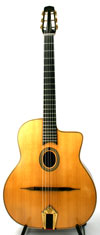DjangoBooks.com
Blog - Page 70
By Denis Chang
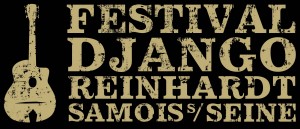
Every year, without fail, I get emails from people all around the world telling me that they’re going to Samois for the first time. So they ask me for help/advice. So here’s an article that will save me lots of time! Before I start, since information and sites may change over time, I will not give away any kind of internet links or phone numbers; instead, I invite you to simply search the internet. I hope to update this article every now and then. You’ll see above the date of the last revision; all information is accurate until the last date of revision, so make sure to always confirm.
I have been going to Samois for over 10 years now, so I have a very clear idea of how things work. I also speak French, which is a tremendous help; I sometimes wonder how non-French speakers manage in such a tiny town where service is extremely limited!
First things first: if you are planning to go to Samois, the earlier you start your planning, the better. The festival has seen tremendous growth in attendance over the past 10 years. Even though I started going in the early 2000s, at that time, it was still a smallish festival. People who have been going for much longer have told me of a time when it was even smaller than that. Today? Forget about it! I’m not going to talk about the pros and cons of this, as I’m sure you can imagine it yourself.
What this means, however, is that hotels / campsites get fully booked earlier and earlier. Some people reserve a year in advance, if not more! The longer you wait, the harder it is, especially if you are a foreigner and it’s your first time.
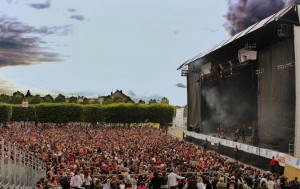
Figure out as soon as you can, whether you want to stay indoors, or camp. The two main campsites that exist are Le Petit Barbeau and Samoreau.
Le Petit Barbeau campsite is the closest to the festival, but it is still a 15-25 minute walk (approximately 2 km). Note, that in 2015, there were talks about the campsite being closed, but then it was announced that it would open for the festival. Hence, the importance of making sure all information is up to date by confirming with the appropriate parties.
Samoreau is a 40 to 60 minute walk (approximately 4 km) from the festival site. When searching on Google, remember that the Samoreau campsite is located in the actual town of Samoreau, so be sure to specify. I’ve put it here in italics, just to differentiate between the two.
Traditionally, Samoreau is considered the “happening” place, where a lot of the well-known players either camp or hang out. Over the years, many people have boycotted the actual festival entirely and stayed at the campsite! I say “traditionally” because as this knowledge became more and more popular, more and more people are now hanging out in Samoreau. As a result of this, like the gold rush, a lot of the intimacy from the earlier years has gradually disappeared. Please don’t misconstrue my words, I am not saying that it’s no longer any good; what I am saying is that there is no one single, definitive magic spot anymore. Great jams now happen everywhere and there’s just no way to know in advance. If you have a car, you can easily hop from place to place, if not, you are basically playing the lottery.
As Samoreau has gotten more and more crowded, some people have decided to hang out at Le Petit Barbeau instead. In past years, many top players have been hanging out there instead of Samoreau!
Some Gypsies also have their own camping area between the festival and Le Petit Barbeau, but they tend to be more private. It’s not that non-Gypsies are not allowed to visit, but it’s generally been exclusively Gypsies hanging around that area.
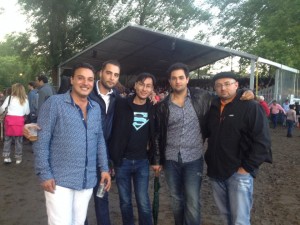
Are the campsites safe? Well, I would not recommend them if you were a naïve trusting person! Any valuables left unattended are likely to be stolen, and that’s all that I will say about it!
If the campsite life is not for you, then you have to look for a hotel or alternative accommodation. Hotels can be found by searching the internet with keywords such as Samois, Fontainebleau, Bois-le-Roi, etc. The village of Samois-sur-Seine only has one hotel that tends to be fully booked very quickly. It is also on the more expensive side during festival season. If you don’t have a car, and only plan on hanging out at the festival site and/or Le Petit Barbeau, it can be a decent choice.
Otherwise, you have to look for hotels in better-populated areas. The main one is Fontainebleau. From the train station to the festival, it is about 4.5 km. There are a few hotels close to the train station, but most are found in the downtown area, which is another 3 km away in the opposite direction! If you are the kind of person that is in need of convenience and amenities, Fontainebleau might be the best choice, as you’ll find the usual stores that one would expect from major cities. However, keep in mind that this is France, not the USA or Canada. I will talk about this later.
Bois-le-Roi is another city that might have accommodation, though it is not as popular as Fontainebleau.
There are also alternative housing options such as AirBnB, or French equivalents such as Gîtes de France, or local BnB businesses. These are much cheaper, but with AirBnB, for example, owners may cancel your reservation at the last minute. Actually, in France, hotels may cancel your reservation at any moment as well, and there’s not much you can do about it! Though rare, this has happened before to people, so be aware! Generally, reputable chain hotels are less likely to do this, but don’t quote me on that! Another thing is that some of these businesses only speak French, or have websites in French only. Good luck!
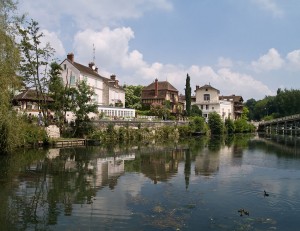
Once you have figured out accommodations, you have to figure out how to get there. If you are from Europe and have the possibility of driving to Samois, then that is great! Things will definitely be easier for you! You can drive to any city in proximity to find accommodations, and you can easily go from place to place. Congratulations! The article ends here for you! A warning for those who are unaware: they have speed radars that clock your speed, so drive within the limit, or you will be hit with a speeding ticket. If you rent a car, the rental company will send you the bill. It also goes without saying that if you do have a car, you should rent or buy a GPS, it’ll make things a whole lot easier!
If you are flying in or taking the train there, you still have the option of renting a car. Just remember that in Europe, the vast majority of rental cars are standard transmission. If you need automatic transmission, you’re generally only likely to be able to find this at major car rental locations (ie airport). Whether you take the train or plane to get to Samois, your major arrival destination is likely to be Paris. Any of the major train stations in Paris (Gare du Nord, Gare de L’Est, Gare d’Austerlitz, etc.) link the city to other parts of France and/or the rest of Europe.
If you fly in to Paris, you will arrive at Charles de Gaulle (CDG) or Orly (ORY) airports. Luckily, public transportation is very easy from either airport. The RER is the high-speed metro system that connects Paris with the suburbs. It can be used interchangeably with the slower metro system in Paris, as well.
CDG is located on the blue line, RER B, and ORY is on the yellow line, RER C. I suggest that you bring lots of coins with you because the machines may not accept certain credit cards. Furthermore, it doesn’t help that the machines don’t accept bills (at least at the time of this article). Luckily, in major areas, you will always find man-held ticket booths. Since the RER covers many regions (known as zones), the fare changes as you travel from zone to zone, which you will be doing if going to Paris. The machines do have instructions in English, so make sure that you choose the correct destination. At the ticket booth, you can tell the ticket person that you are going to Paris; you can even tell him/her that you want to go to Paris, Gare de Lyon station.
You will be given an RER ticket, which is interchangeable with the metro in Paris. However, if your destination is Samois, you will only be taking the RER. Do not throw away your RER ticket until you’ve left the station, as you will need it to exit. If you have bought a ticket that does not cover your zone (Paris), you will not be allowed to exit either! So do make sure to specify the zone, when purchasing!
From the airport, you want to get to the red line, RER A. If you look at a a map of the RER, you may notice that each RER line branches out into other lines, in the outer zones, but you don’t have to worry about that, because from both airports, all lines will lead to Paris (provided you took the right direction!).
From CDG, you take the RER B until Châtelet Les Halles. From there, you switch to the RER A, and go one stop east to Gare de Lyon. Again, don’t worry which train you take, as long as it’s the RER A and it is going east.
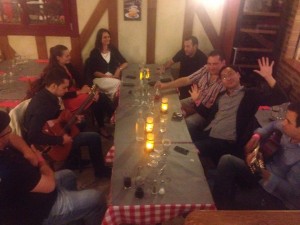
From ORY, take RER C until St-Michel Notre Dame, switch to RER B northbound (again, any of the trains) until Châtelet Les Halles. From there it’s the same directions as before.
Once you have reached the Gare de Lyon RER station, you want to go to the actual Gare De Lyon train station. You won’t have to go outside the building for this, look around for signs.
The train station itself is quite huge, and can be confusing, even for French speakers! There are all sorts of ticket booths around, but the one you are specifically looking for is the ticket booth for Ile-de-France, which is the region where Samois is located. The location of this booth actually changed in recent years, so I won’t tell you exactly where it is. In the past, it was the most discrete and smallest booth in a little corner, which certainly didn’t help! Look around, or ask someone. If it’s the same as 2014, it should be on floor 0 (Niveau 0). The RER station is on floor -2 (Niveau -2), and you will have to go through floor -1 (Niveau -1). Once you find the ticket counter (there are also machines), ask for a train to Fontainebleau, and ask what the final destination is; Fontainebleau will not show up on the big information board, as it is not the last destination. Final destinations may be Laroche-Migennes, Montereau, Montargis, or Sens.Again, things may change, so be sure to just ask.
The train tracks to Fontainebleau are in an outdoor area, where in the middle, against the wall, there is a fancy looking double staircase. At the top is a restaurant (Le Train Bleu) facing the tracks. This should be the blue platform (plateforme bleue). There is also an information booth close by, so you can also double check.
Now you play the waiting game; I suggest Candy Crush Saga (be sure to send facebook game invites to everyone). Once it is possible to board the train, make sure to validate the ticket at the machine where the train is located. If for some reason it doesn’t work (which has happened before), just explain it to the ticket person (if he/she even passes by). If for some reason, you didn’t buy a ticket and were hoping for a free ride, the penalty for getting caught is a bigger fee (or you can tell them the secret password: I know Cosmo Kramer).
It’s roughly 40 minutes from Gare de Lyon to the Fontainebleau train station. Once you arrive in Fontainebleau, you will probably want to head to your accommodation. Like I said, Fontainebleau is the biggest city close to Samois, so if your base of operations is in another city hub such as Bois-le-Roi, you’ll have to make the necessary adjustments. Nonetheless, Fontainebleau covers a fairly large radius of Samois’ vicinities. If you have a mobile phone, it’s good to get the numbers of some taxi companies in Fontainebleau; otherwise, they can be very difficult to come by. Even designated taxi stands can be empty for hours. With a mobile phone, you’ll be able to call up a cab. In Paris, you can easily get a prepaid sim card with data plan for very cheap. There is also a bus that takes you downtown if that’s where you want to go. Again, this information is always subject to change, so be sure to confirm on the Internet.
When the actual festival starts, they have designated shuttle buses from the festival site to the Fontainebleau train station, but that is ONLY during festival hours. In other words, if you arrive on Wednesday morning, the shuttle bus will not be there until the evening when the festival officially starts. If you’re not carrying much, you can also go to downtown Fontainebleau and look for a bike rental place. It is quite affordable, and you can rent a bike for the entire duration of the festival. Keep in mind that stores are not necessarily open on Sundays, and therefore, you would have to return the bike on Monday. If you have a flight to catch, you have to plan around this. It is also possible to rent a car in Fontainebleau, but the same rule applies, you might only be able to return the car on a Monday morning!
The great thing about the bicycle is that it forms a triangle of equal distance between Samois, Samoreau, and downtown Fontainebleau. It’s about a 15-20 minute ride from one location to the other. Be warned, however, there are lots of brutal slopes in Fontainebleau (whether leaving, or entering the city!).
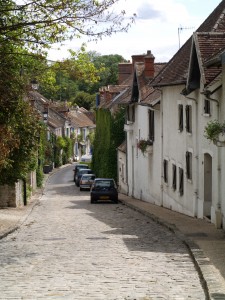
Now remember that thing I said about convenience, and the American/Canadian lifestyle? Those of you from Canada and America are used to a life of incredible luxury whether you know it or not. In most places in Canada or USA, it is very easy to find service when you expect to find it. Not so in France, especially in these tiny remote areas. Businesses may take breaks at unexpected moments, buses might not follow the official schedule, and many businesses are closed on Sundays. You can wait all you want at a designated taxi stand, but a taxi may never even show up. It’s best to have a mobile phone with you to call a taxi. Even then, if it’s too late, and the taxi driver doesn’t feel like working, well then, you have to find an alternative solution. This is relevant as sometimes you might feel like hanging out at the festival site or campsite until the wee hours of the night. If you end up without a way to get back to your safe house, you better make friends quickly, or sleep in the open. That’s how things work over there; so don’t expect the easy American life to which you maybe accustomed. It goes without saying, but don’t expect everyone to speak English. It seems like a dumb thing for me to say all this, but I’ve literally heard this a few times “What do you mean they don’t speak English? It’s the 21st century, everyone should speak English”. I’ve also heard stories of people walking into a business and exclaiming at the top of their lungs “EXCUSE ME! I’M AMERICAN, I NEED HELP!”. Sorry American friends, I don’t mean to embarrass you, but these things have happened before, and I just want to explain everything clearly.
The more prepared you are, and the more you understand this, the easier it will be for you. The good news is that there are usually lots of nice people that go to this festival and that might take care of you if you’re not an obnoxious idiot. You might even run into me! I usually don’t like to see people in distress, so if I can help you in anyway, I probably will (and have in the past).
That covers a lot of the questions that most people have about the festival. Let us now tie up the loose ends.
Tickets to the festival: should you buy them in advance? You can if you want, you can order them online and pick them up at designated areas. In the past, I was able to buy tickets in advance and pick them up at the FNAC (major retail chain) close to the Châtelet Les Halles RER station in Paris, but again, don’t quote me on that. You can also pick them up during the festival at the ticket counter, which is located at the entrance to the festival. I’ve personally never heard of tickets being sold out.
The festival itself is located on a tiny island on the Seine river. This island is connected to the village by 3 bridges. The southern bridge is exclusively for artists/merchants, and the northern bridge is generally for exiting, though in the past, people with special passes were able to get in. I doubt that’s you, so you have to enter the festival through the bridge where the ticket counter is located. The name of the island does not appear on Google Maps. It is called L’Ile Du Berceau; it is the tiny island just to the southwest of the bigger island L’Ile aux Barbiers. Yes, that’s right! The official festival happens on that tiny island!
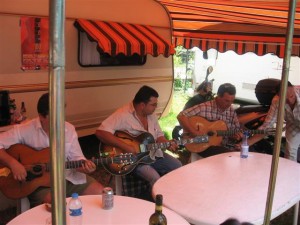
Here’s the catch: traditionally, on weekdays (Wednesday until Friday), the general public can only enter the festival site once. If you choose to leave, you cannot get back in without buying another ticket. If there are things you think you need to do, do it beforehand. Definitely go the bathroom before, or face the filthy, overcrowded porta potties. Remember how I said that the festival has seen tremendous growth in attendance? Well you can imagine how it must be on a busy Friday night with 5000 people on a tiny island.
You might want to bring food or snacks as well. Otherwise, you are forced to buy from the festival merchants. It’s not so bad, the selection is somewhat varied (and never the same every year), but the prices are expensive.
On weekdays, the festival starts in the evening, before the first concert starts. When the festival ends many hours later the security guards will kick everyone out (it wasn’t like this in the past). If you rely on the shuttle bus, make sure to check the schedule so you can catch the last one, and always plan ahead, unless you like adventure.
On weekends, the festival starts earlier; check the schedule of the first concert and arrive earlier if you want to be one of the first on the island. You will given a bracelet that allows you to enter and leave the island as you please.
This is a matter of preference, but for me, the cool thing about the festival has always been the jams, not the actual official concerts. On the northern side of the island is the big stage where the concerts happen. Behind the stage, all along the island is where luthiers display their instruments. You can catch lots of cool jams here, and you can also try guitars. Some people bring their own instruments, and set up their own jams as well. On one side of the island, are the luthiers / gear vendors, and on the other side, are the food vendors. In between, you will find chairs and tables. On the southern side of the island, are the filthy porta potties. In recent years, they have also set up a tiny stage on the southern end for various musicians to do mini performances. You might end up on that stage, if you are politically connected to the right people.
That, my friends is the actual Samois-sur-Seine Django Reinhardt festival. It takes place on a very tiny island. It has become more and more commercial as the years have gone by, and more and more casual tourists are showing up. This is not a criticism of any kind, but it is what it is. For that reason, many people choose not to go to the island, and instead, hang around the campsites to create their own festival.
In the town of Samois, you can also find jams in the town square during the day. You can go visit Django’s grave in the cemetery, but it will be a bit of an uphill journey. You can find his tomb in one of the corners of the cemetery. You can check out his house, which is close to the festival island. During day, they sometimes organize little activities in the town square: little performances, art exhibitions, etc. Unfortunately, the legendary restaurant/bar Chez Fernand no longer exists. People still hang out there sometimes, but in the past, it was one of the major locations for impromptu jam sessions with the cream of the crop.
Again, in recent years, the festival has seen tremendous change. If you’re into checking out jam sessions with some of the top players, it can happen anywhere. It still happens in Samoreau, but it can just as easily happen anywhere else! A car really comes in handy!
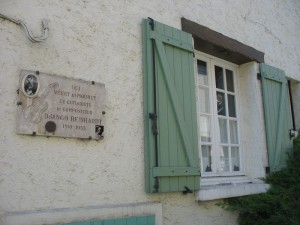
The festival is still the Mecca of all things Django Reinhardt, but a lot of the top players have also been avoiding the festival unless officially invited, so don’t assume that EVERYONE goes to the festival every year just to hang out. I’ve noticed less and less Gypsy attendance in recent years because of this. In the past, it was their tribute to Django Reinhardt. Now, it’s attended by Djangophiles from all over the world, and many casual tourists; they’ve really taken over the festival. This is NOT a criticism, merely a factual observation. There is nothing wrong with these Djangophiles (I’m one of them!), but a lot of the recent converts to Gypsy Jazz are into a very experimental/progressive approach to the style. All that is totally fine, it is like what newgrass is to bluegrass. However, if you like the old charm of the 60s/70s/80s/90s Gypsy Jazz, I have to admit it’s harder and harder to find, as the new wave players have really taken over! Gypsies and older players were generally the keepers of the this style, and if recent years are any indication, there will be less and less Gypsy musicians going to Samois. Partially as a result of this, in 2012, the Gypsies in Alsace created their own festival called Festival Jazz Manouche in Zillisheim. It happens just before Samois. I have never been as it constantly conflicts with my favourite festival, Django in June, in Northampton, MA, USA. Who knows what the future yields for Samois? I personally would like to see room for everyone!
That, my friends, is Samois; it’s a big jungle, you have to create your own schedule. It’s like going to New York, you have practically everything at your fingertips but where do you go every night?
One final word of advice, if you are flying out of Paris, plan your flight departure accordingly. Remember, you are in a remote part of France, and service might not be easy to find. Make sure you have a way to easily get to the Fontainebleau train station. If taking the RER to get to CDG or ORY, this time you have to make sure that you take the right train, as they will branch out into different directions. You will have to pay attention to the little screen to know which one to take. It’s a good idea to have a map of the RER; the screen capture function on your smartphone is very handy in situations like this!
Keep in mind, things change, so always make sure that the above information is still relevant.
As always, if you enjoyed this article, please check out my site DC Music School www.dc-musicschool.com for lots of cool Gypsy Jazz lessons! Your support allows me to write these articles and produce more cool lessons.
Greetings Gypsy jazzers! Here’s what’s new at DjangoBooks.com:
2003 Jean-Pierre Favino Jazz S
2015 Dupont Busato Royale Brazilian
2011 D’Aigle Selmer Maccaferri
Eastman AR910CE-BD LTD Uptown Archtop
SGJ Rhythm Guitar Fundamentals
Denis Chang provides tips on how to best enjoy the world’s premiere Gypsy jazz event!
Keep playing!
Michael
By Denis Chang
Have you ever wanted to learn how to play authentic Gypsy Jazz rhythm?
I can show you the secrets! This is a limited time offer only! Subscribe now! These secrets are so coveted, I’m giving it away for the low, low, LOW price of 19.99$ (Full retail value 499.99$!!!!). Subscribe soon, because I might have to take this down before the Gypsy Jazz police come after me! LOL!
Do you ever watch some of your favourite Gypsy Jazz rhythm players and wonder how they do it?
I can show you how! If you’re not satisfied with this lesson, I’ll offer you a full refund, no questions asked! SATISFACTION GUARANTEED!
In this step-by-step guide, we’ll show you all the secrets of your favourite players such as…
Just kidding, folks! This is not a sleazy article to get you to buy products. Although, many of the topics I discuss are explained in explicit detail in my DC Music School Gypsy Jazz Rhythm lessons (featuring yours truly), this article will mainly cover the historical role of the rhythm section in the music of Django Reinhardt, Gypsy Jazz, and jazz/swing music in general. I will include many recorded examples to demonstrate my points.
I have been particularly interested in accompaniment and interpretation since I discovered the music of Django Reinhardt. The guitar accompaniment itself, that we call La Pompe has been a great source of confusion and mystery for many players. Many people are explaining it differently, and many claim that theirs is authentic. Who’s right? Who’s wrong? Denis Chang is right, of course! Just kidding! Well, if you are familiar with any of my articles, then you know that we’re in for a roller coaster ride! When it comes to rhythm guitar in any style, there is so much that can be sound, but I will stick strictly to basic tone and basic execution/interpretation.
The answers to many of your questions require a lot of in-depth analysis. For starters, the word “authentic” itself is ambiguous and subjective; anything can be authentic, if enough people believe it to be. Repeat anything a thousand times, get other people to join in on the bandwagon, and it becomes the truth. For this reason, I will be talking about things from an objective and historical point of view. Of course, I will also share my opinions but they will be just that, and nothing more.
Over the past 15 years, I’ve had the opportunity to befriend and perform with some of the best players in the style. I won’t name drop, and I will even admit that sometimes these opportunities happened thanks to connections/circumstance, and not because I’m the king of rhythm guitar! Nonetheless, I am very thankful for these varied opportunities because they have given me tremendous knowledge and experience! I’ve also played with not so good players, and this too has helped me really understand the topic at a very deep level. I still have much to work on (as does everyone), but I would dare say that I am very knowledgeable about it.
La Pompe is far more than just playing quarter notes; many people underestimate the difficulty and artistry involved in playing rhythm guitar. Even the actual act of playing quarter notes involves interpretation; does one play on the beat, behind the beat, ahead of the beat? Should beats 1 and 3 be ahead of the beat, and 2 and 4 on the beat? Or vice-versa? The combinations are vast! We will discuss all of this in detail.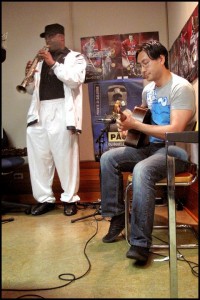
Furthermore, in contemporary Gypsy Jazz (check out my article on the history of Gypsy Jazz https://www.djangobooks.com/blog/author/denis-chang/), there are many styles beyond swing rhythm, but for simplicity’s sake, we will only be focusing on the standard 4/4 swing rhythm. Although many people focus on the rhythm guitar aspect of accompaniment, any other accompaniment instrument, whether bass and/or drums, is equally important and intrinsically tied to the rhythm guitar. I will certainly talk about it as well.
Let us first start with the guitar, and some history! Did Django Reinhardt invent La Pompe? No, he did not. The term itself is old French musician jargon referring to the alternation between bass and treble in piano and accordion accompaniment back in the day. La Pompe is literally “the pump”. In Gypsy Jazz circles, it refers to the swing guitar rhythm. La Pompe simulates the sound of a self-contained rhythm section: essentially, drums, harmony, and potentially bass. This is the key concept; the guitar is used to simulate other instruments. As we all know, instruments can sound many different ways; as such, it stands to reason that the sound of the guitar can also change depending on what we sound we are trying to simulate. Let’s make it clear right away: there is no one right way to play La Pompe! There are certainly bad ways, but even then, we end up in subjective territory.
La Pompe, in its most generic sense of the word, has existed before jazz music. On the guitar, Oscar Aleman was playing La Pompe in his native Argentina. In the USA, Lonnie Johnson was using it to play the blues. In France, Django Reinhardt was playing the popular dance music of the day. Furthermore, before the guitar became widespread, many musicians were playing La Pompe on 4 or 6 string banjos.
Django was also not the first to make it sound distinctly growly on beats 1 and 3 as is typical in Gypsy Jazz nowadays. It appears that it was always a sound that good rhythm guitarists naturally went after, back in the day, sometimes playing voicings that included the 5th of a chord on the low E string when the tonic was on A string (Charlie Parker 1943 Charlie Christian). Historically, I do not know if there was a specific reason for this, but I would assume that it just made things heavier, and helped strengthen the feel of the rhythm section.
Conventional wisdom leads us to believe that chord voicings were sparse in this style of guitar playing, often citing a specific period of Freddie Green’s career. However, in his early days, and in specific ensembles (notably with Eddie Durham in the 30s), Freddie, himself, played a rhythm style very similar to one of Django Reinhardt’s rhythm styles. Though, it is very difficult to ascertain the exact voicings, they were not the sparse one, or two note voicings that he became known for later in his career.
https://www.youtube.com/watch?v=VL1Wf8T_lj0
Rhythm guitarists in those days favoured dense voicings, sometimes with full bass notes on the lower strings. The voicings themselves were not very complex, generally triads for major and minor chords, and simple dominant 7th chords. Of course, there was no hard rulebook to which guitarists adhered. Therefore, one might occasionally hear special colours, such as augmented 5ths or dominant 9ths, but generally the chords remained simple.
Django Reinhardt, because of his limitations, had to figure out ways to play similar sounding chords and, therefore, came up with a few special voicings that made use of extensions. I have heard people claim that jazz music is based on 7th chords, and that Django innovated jazz by focusing on 6th chords; that is flat out wrong. The focus on the 7th sound came a little bit later in jazz history, and is mainly associated with the bebop movement. In earlier jazz, the 6th was the color of choice for major and minor chords, and Django simply adopted it into his rhythm playing. However, it is interesting to note that when he could, Django still tried to play triads. For instance, a C triad barre chord on the 3rd and 5th frets of the guitar; this can be clearly seen in existing footages of him. This is very interesting because, even with his long fingers, it requires a little bit of effort, when he could just as easily have played the famous Gypsy Jazz C6/9 voicing in the same position. Whether there is any musical intent behind this, we will never know, but it is certainly interesting to point out. What is important to note, was that his rhythm guitar players played the typical triadic voicings of the day. Django, therefore, did not insist that his rhythm players copy him, as contemporary Gypsy Jazz players often do!
From my conversations with Elios Ferret (son of Matelot Ferre who, along with his brothers, accompanied Django), I was able to confirm that Django was very musically aware; he insisted that the rhythm section be aware of dynamics. This is extremely important, because, it goes without saying that the rhythm section should be there to support the soloist. I believe that dynamically, the rhythm section should always strive to match the dynamics of the soloist. If a soloist is playing soft melodic lines, the rhythm section should play softly behind him/her. If, on the other hand, he/she were playing aggressive/virtuosic lines, the rhythm section should match the intensity.
While on this train of though, I’ve had conversations with musicians that said that guitarists have to be amplified if there was a drummer in the ensemble. I disagree; it is up to the drummer to learn how to be quiet to fit the dynamic intensity of the group. This is orchestration 101; good composers and arrangers write their music with full understanding of what each and every instrument can and should be doing at any given moment. There is no reason why this kind of reasoning shouldn’t exist in improvised music of any style. Listen to the fantastic recording of Begin the Beguine by Fapy Lafertin on his album Fleur De Lavende. Notice the light and sparse drumming supporting the soloist; it swings and it fits perfectly!
Nowadays with technology, it’s very easy to amplify the guitar, and it’s a big topic best left for another article, but in my opinion, one should not be a slave to amplification as it can greatly negatively affect one’s idea of technique and music. The tone of acoustic instruments change significantly in the way we attack the strings, and over amplification can force us to attack in a restrained way that does not allow us to explore the full dynamic range of the acoustic guitar. I believe that it is up to the entire ensemble to adjust their dynamics according to the lead instrument’s volume. Unless one were to approach this from the perspective of a rock band (and some do, which is fine, if that is their intent), amplification should be used sparsely and with great attention to musicality.
At any rate, throughout his career, Django and his rhythm players played La Pompe in many different ways. There is no distinct defining rhythm style associated with him. Again, with the lack of interviews and anecdotes, we will never know how much of it was intentional, but I would like to think that a vast majority of it certainly was!
Listen to the rhythm guitar (Joseph Reinhardt) in the August 1934 recording of Tiger Rag: very straight, equal duration chords with light accent on 2 and 4.
Now listen to Rose Room, recorded in 1937: still Joseph Reinhardt, but with the addition of another rhythm guitarist (Gusti Mahla). Notice, that the sound of the rhythm guitar during Django’s solo is a little bit heavier and slightly more staccato than the 1934 Tiger Rag recording. Because of the audio quality, it is hard to distinguish whether they were adding the upstroke grace note on beats 1 and 3, but Django certainly was when he was playing rhythm.
http://www.youtube.com/watch?v=6gdcWJdXpfk]
However, this upstroke is very audible in the 1937 recording of Minor Swing. I like to refer to this style of rhythm playing as the Hot Club sound. Even then, one should not quickly assume that this particular recording is the definitive way to do it.
https://www.youtube.com/watch?v=VpmOTGungnA
If we listen to the 1939 recording of I’ll See You In My Dreams, we hear the same rhythm style but with a lighter attack, and a shorter duration for the chords. We begin to see with just these few examples how flexible rhythm guitar can be in swing/jazz music!
Moving forward in time, in 1943, let us listen to the recording of Douce Ambiance; a drum now replaces the second rhythm guitarist. Notice the sparse accompaniment that gives plenty of breathing space for the lead instruments! The rhythm guitar is light, and straight, matching the sound of the drums! This is very reminiscent of Charlie Christian’s own rhythm playing (listen to his recording of Rose Room with Benny Goodman).
In 1949, Django recorded a Minor Blues that I particularly like because of his accompaniment. It is very dry, raw and direct; it almost sounds like a march. I made a note for note cover a few years ago that you can watch here:
Assuming that my transcription is accurate, notice the use of triads on the I chord. On the IV chord (Cm), he uses a Cm6 voicing that sounds thinner than the Gm triad that he plays. Again, I would not dare say that I know exactly what he was thinking, but I do have certain theories about this. I believe that Django purposely used a richer and thicker sounding voicing on the I chord because it was more functionally important than the IV chord. Otherwise, if he had wanted to be efficient (and considering his handicap), he could have used the same voicings for both chords, which he clearly didn’t. He only starts playing Gm6/9 when doing effects such as the tremolo section on the penultimate chorus. With his handicap, he could have easily played Gm6/9 throughout, but instead, he always focused on the triadic sound! Of course, it is just a theory that I have, but I would not say that it is far-fetched; for someone who was illiterate and had practically no concept of music theory, Django was a very astute observer.
This leads me to the topic of voicings. I would like to think that Django was very aware of his choice of voicings, even despite his limitations! He played a specific voicing because that was the one he had in his musical vision. This is in stark contrast with contemporary players playing a voicing because it happens to be the one that they know. This idea of going to our “go to” voicings is not limited to Gypsy Jazz, but all styles of music. We should strive to play a voicing because it is the one we intend to play; we must always be able to justify it even if we may not agree with the choice, hence the subjective aspect of music. When I teach or give critiques, I try not to tell people how I think they should play, but I instead ask them if that is how they want to sound. Most of the time, people are unable to answer this question. Food for thought!
This is, of course, incredibly subjective and personal, and it is obviously something you will have to spend time thinking about in your own time. I will, however, explain my choice of voicings and rhythm styles.
I choose my voicings based on the repertoire, the style, the tempo, and especially with whom I am playing (both the soloist and the rest of the rhythm section). I am always listening for clues to find the best way to complement the band. There are countless variations for this, but I will give you a few different scenarios.
The same song can be played in so many different ways. If I played Minor Swing with a player with strong bebop inflections, I would gravitate towards Minor 7th chords. I might even add a Bm7b5 before going to E7, which I may dress up with a b9 or #9.
Notice the sound that I am using; fairly long duration of the chords on all beats, light attack with a slight accent on 2 and 4. Of course, keep in mind that this is a general example; in reality, I constantly react according to what the soloist is doing, and the rhythm style may change within the same performance according to what I hear.
If on the other hand, I was playing with a old style swing player, then I would opt to use the simple triadic voicings of the 1930s.
If I played with certain Gypsies in the east of France, I would use some of the heavy and rich voicings that Django used, and then some; I might even play F6/9 instead of Dm6 as is typical in that region! Played in that region tend to have a much heavier attack, which is the perfect opportunity to let loose!
Notice the difference in dynamics between this style and the previous recording. The same drive and intensity is there, but a different dynamic level. Again, I remind you, that things may change, and I may use a completely different way of accompaniment based on who I play with and which song we were playing. The Gypsies, themselves have many ways of accompanying, and it can just as easily sound a different way. As always, there is no specific principle that they follow.
Keep in mind that the sound of the rhythm can also change based on the tempo of the song; the possibilities are endless! Here are two examples of two uptempo songs just to give you an idea.
As you see, if we go beyond a narrow-minded contemporary vision Gypsy Jazz, there is no one defining style of rhythm playing. That said, when I do teach contemporary Gypsy Jazz, I generally teach a form of the basic Hot Club rhythm that we talked about earlier; with and without the upstroke, which is yet another option to all the rhythm styles (and then some) that we have looked at so far. Gypsies (the Manouche Gypsies anyway) seem to have preserved a lot of the sound of the old style, but they have also brought in their own touch, which is generally a much heavier and aggressive sound. Even then, as I mentioned earlier on, there is no one single defining style; the sound varies from region to region, or even player to player. People talk of a Parisian school, Alsatian school, Dutch school, German school, Bieber school but quite frankly, I’m not sure that I 100% agree with this. There may have been a time when that could have been very true, but in my travels, each player had their distinct way of accompanying; certain players may be influenced by local players, but accompaniment styles can still differ greatly. Listen to Hono Winterstein’s accompaniment versus Dorado Schmitt’s accompaniment. For your information, they are both from Forbach in the Lorraine region of France; Hono is Dorado’s brother-in-law.
If we are to assume that the real way of playing Gypsy Jazz rhythm is the contemporary Gypsy way (and I don’t, although I am heavily influenced by them), then indeed many people are teaching it wrong.
This leads me to my next point, there are a number of players teaching the Hot Club rhythm in an interesting way, and it has become quite popular among non-Gypsy musicians (all around the world, and even in Paris). This style of rhythm playing comes from trying to emulate the sounds that one hears on Gypsy recordings. Unfortunately, rhythm guitars aren’t always mixed prominently in a recording; with all the mixing and mastering, sometimes the sound of a rhythm guitar ends up giving the illusion of sounding a different way. This is what many players have copied. Interestingly enough, when these players, then record this way, it ends up sounding different from the recordings they originally tried to emulate. Again, I am not criticizing these musicians; it is perfectly their right to play it however they want. For instance, people who don’t speak French, generally can’t tell the difference between Swiss, Belgian, Quebec, Parisian (etc.) accents; I have been so deeply involved with Gypsy Jazz at an intimate level, that I am able to hear these little details, the same way I can distinguish between the various French accents (since I do speak French). Interestingly enough, I know the players that they try to emulate, and they themselves confirm that they definitely do not play it that way.
One such way is a heavy emphasis on beats 1 and 3 and a nearly or quasi-muted staccato 2 and 4. While it’s definitely not my “go to” standard swing rhythm, I wouldn’t be quick as to completely dismiss it despite its fascinating origins. I think certain rhythms can be used for very specific situations.
In the instance of a folkloric Gypsy song, it can be nice to have a longer 1 and 3 and a short 2 and 4. You can hear this on the lesson/album that I produced for Tcha Limberger, Romani Gilia Vol.2, on the song “Kai Djas Kan Miri Pirni”.
http://www.dc-musicschool.com/catalogue/video-lessons/romane-gilia-ft-tcha-limberger-vol-2/
On certain slow to medium swings, it can also be interesting to have a quasi muted 2 and 4; it reminds me of a nice Sinatra feel.
Generally speaking though, I think it’s a good idea to match the duration of the chords on the left hand. If the 1 and 3 were to be played short, the 2 and 4 should be played short as well. If on the other hand, exceptions aside, the 1 and 3 were played longer, the 2 and 4 should be held longer as well. The duration of the chords don’t necessarily have to be exact, but there shouldn’t be such a huge contrast like in the last few examples. Again, this is but my opinion, based on the sounds that I like (which include both Gypsies and pre-war jazz guitarists)
In my opinion, the best way to learn Gypsy Jazz rhythm sound production, is to learn to play chords with longer durations, and then to learn to play them with shorter durations. Once these two are assimilated (and it is no easy feat), we will be able to technically achieve any sound we want. Most people are only familiar with a short duration for beats 2 and 4, and it is extremely difficult them to hold on to the chord without sacrificing tone on the other beats and the right hand. Indeed, while working on the left hand duration, the right hand must remain the same!
With regards to using the upstroke, there are many ways to approach it as well. Some upstrokes are lighter, others are more pronounced. It is merely a question of preference. In the instance of medium to up-tempo swing, the upstroke should generally be extremely close to the downstroke, to the point where they form one tight unit. The up and downstrokes should generally not be separate rhythmic units.
One can choose to hit all the strings on the upstrokes and downstrokes in the style of Fapy Lafertin, or just the bass strings, in the style of Hono Winterstein. The difference between the two is quite subtle (and we’re not even talking about left hand duration).
Disclaimer: I wouldn’t dare say that that is exactly how Fapy and Hono play their rhythms. In fact, they have more than just one style, but I would say that it is fairly close to what they do.
On beats 2 and 4, I like to hit all strings, but a few players like to alternate between bass (roughly E to G) and treble strings (roughly D to E) on 1 and 3. Once again the difference is subtle.
All strings on 2 and 4 :
Treble strings 2 and 4 Example:
As you can see, the combinations are near endless!
On the other hand, when playing ballads, chord durations and the use of upstrokes are different than for swing rhythms; it’s an entirely different approach. Once again, there are no rules, and it depends on the song and the mood that one wishes to convey.
For lyrical passages, one can have much longer chord durations to the point where the harmony rings out in the sonic spectrum. I will give you three examples of ballad rhythms with long duration:
In the first example, notice the pronounced and slow upstroke before beats 1 and 3. Of course, the upstrokes are optional, it can be done with only downstrokes throughout./
In the last example, notice that my left hand never releases the pressure except to switch chords!
For passages that are more dramatic and require more intensity, I may make the chord durations much shorter, and if I choose to use an upstroke, it is much quicker:
I think I have given you enough examples for you to understand, that there is no one right way to do things. In fact, there are many other sounds that can be achieved, but the point of this article is to only to help clear some of the confusion.
How then do I decide which rhythm to use? As I said, it depends on many factors. If I were just jamming casually, it shouldn’t matter too much, though it would be nice to listen to each other and complement each other. If, on the other hand, I was working in a professional setting, I usually just ask the player what he/she prefers. Some are very easy going (phew!), others have a very clear vision of what they want, and I try my best to fulfill his/her vision.
My good friend Roberto Rosenman, from Toronto, coined the term Rhythm Bitch; it’s really just light humour, but the fact is, a rhythm player should truly be at the service of the soloist.
Of course, there are other styles, where the line between rhythm and solo becomes quite blurry, and the rhythm section actively influences the soloist. This is another style of playing, which is certainly valid. There’s not much to say about that style of playing, because in that world, anything goes! In my opinion, that style of playing works best in smaller settings such as duets, otherwise, things can easily get chaotic. Whenever I play this way, I listen very carefully to what the soloist is doing, and at times, I may even completely reharmonize a song if I hear that the soloist is about to hit a specific note, and I know that my new harmony will fit. It can be quite exciting!
Speaking of harmony, I’ve talked about the importance of choosing the right voicings, but one should equally be aware about which sets of chords to play. Many songs, if not all, can be played in a number of different ways. Some songs within a particular style have a standard set of changes that most players know, but others, that are less common, can be played in many different ways. In a professional setting, it’s a good idea of the ensemble to be an agreement with which sets of changes to use. It’s always amusing to witness a jam session with each player playing completely different sets of chords (and in some cases, chords that are conflicting) and seeing everyone being completely oblivious to it. I really wonder, are they listening?! I encourage you to listen to different versions of songs and to pay attention to what chords are being played, it can be a very educational experience, and can give you new ideas.
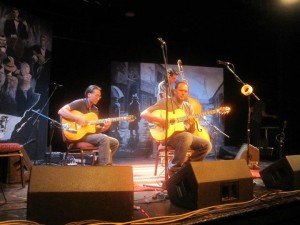
With regards to timing, believe it or not, it can be highly interpretive as well. The tempo can and certainly will move, though in my opinion it should be extremely subtle; anything more should be intentional. No one is ever 100% metronomic, we all move in one way or another. I have to admit that everything in my previous examples was recorded to a click track, and since I am using midi bass, I lined up my rhythm guitar to be perfectly in sync with it. This is not reality, however.
This is very subjective, but most people who are playing swing music generally want the beat to drive a little bit. It should give the feeling of pushing without really speeding up too much; once again, it is very subtle. In the more contemporary Gypsy Jazz style, people to tend to exaggerate this a little bit; I’m not a huge fan of it, but I suppose that’s what the style is. I, myself, am sometimes guilty of it if I don’t pay attention.
One of the best examples of subtle pushing, is Django’s first recording of Minor Swing in 1937. The band gets excited over the course of the song, and by the end of the tune, the tempo has sped up a little bit, though it is not so obvious.
With this feeling of subtly pushing the beat (without speeding up too much), soloists have more freedom in their phrasing, and can easily play on the beat, and with a bit of skill can play behind the beat which creates a very fluid and relaxed feel. Generally, guitarists with a lot of technical facility have no problem playing ahead of the beat, and in fact we tend to naturally gravitate towards it. It can certainly be an effect, and works great for certain passages, but in my opinion, we should try to use it sparsely.
On the other hand, if the rhythm player is dragging, it can make many soloists nervous, and those who tend to play slightly ahead of the beat will sound much more out of time than they should. This can especially be a drag (pun intended) on uptempo virtuosic songs, where the soloist is really giving all he/she’s got.
Any fluctuation in tempo should not be too noticeable (unless intended). Usually the ones who notice this feeling are the people soloing (or dancing!).
I would encourage you to experiment with a few different concepts; trying to push on 1 and 3, but keeping it steady on 2 and 4, and vice versa. Record yourself, and try soloing over the tracks to feel the effect. Again, this is something that is extremely subtle and kind of pushing should be microscopic. On slower songs, one might even want to have a subtle laid back feeling on the 1 and 3 and keep the 2 and 4 as steady as possible, especially for lyrical passages. On dramatic passages, where the rhythm is more staccato, I would suggest striving to keep all beats steady, but if it had to move, better to slightly push than drag. Again, I remind you that this is highly subjective and you should simply just try to experiment with what feels best for the people you play with. I have played with people who preferred that the rhythm section drag a little bit; I have also played with people who insisted that the rhythm section REALLY push the beat. There are all sorts of opinions out there, and if they are the leaders of the band, then they are the ones who are right.
I remember doing a tour with two rhythm guitar players, where one was fairly consistent with the beats, but the other one had a tendency to push the 2 and 4 a little bit more than what felt comfortable for the soloists; with two rhythm guitar players, with conflicting time feel, it created a bit of a echo effect. In instances where there are two rhythm players, I urge you to listen very carefully to the timing and to find a common meeting point. These are very subtle and require tremendous concentration.
No one is perfect, I’ve had my share of off moments on certain songs, where I dragged or pushed more than I should have, and I’m happy to say that I’ve seen all the best players do the same. In the end, it requires constant concentration, which is why rhythm guitar is not as easy as it appears to be!
But enough about guitar! As I have mentioned earlier on, the bass is an equally important of the equation. None of the sound issues we talked about matter, if the bass is doing the same thing all the time, especially if it’s a different thing! In fact, it just kills the whole feel, in my opinion. There was a time earlier in my career when I thought every bass player was the same; just get anyone who can walk in time, and that’s it. How naïve I was!
With regards to upright bass sound production, many bass players seem to play the same way, walking bass. When it comes to playing swing music, many are at a loss! Few can play with a bow in tune and with a decent tone. In fact, I believe that whatever instrument we play, we should learn to take advantage of all the sounds it can offer. The contemporary pizzicato rest stroke technique for bass involves playing fairly long tones for walking bass, and the attack is sometimes somewhat soft. It is the standard technique, and make no mistake about it, it’s fantastic, but it is not the only way to play the instrument. Yet, for many bass players, it is the only way that they know.
The slap technique of the old days is great and I don’t see any reason not to learn how to do it , even at the most basic level. It doesn’t have to be the virtuosic slap style that rockabilly bass players are known for. There is a percussive intensity in the old style of plucking the bass that works great for old style swing / dance music. Listen to this clip of Louis Armstrong from 1933:
or this contemporary Gypsy Jazz recording:
There is also no reason why the bass shouldn’t be played with a bow in jazz / swing music. It can create wonderful textures and can still swing, if done properly:
In the context of swing music or Gypsy Jazz, there is no one right away to play bass, again it depends on the same factors as rhythm guitar.
If we go back to the standard walking bass, there are many ways to do it as well. In this recording, the bass notes are held long but the bass player applies a certain level of intensity in the attack for each note, often using always the same finger to pluck each note:
Now listen to the same bass player, and same lead player playing a heavier song:
Notice that the bass player is still walking but now the duration of the quarter notes are much shorter, and the intensity of the right hand is a bit stronger resulting in a pumping feel!
I invite you to listen back to all the recordings that I’ve made for this article and listen to how the bass complements each of the rhythm guitar styles. Again, nothing is set in stone, it’s not about copying but about complementing, and there are different ways to do this; in the end, it’s up to you and your bassist to experiment.
As to when one should be playing in two feel or walking bass, once again, that entirely depends on so many factors. Everyone will have their own take on this. I feel certain songs certainly benefit from playing mainly in two feel, such as older swing songs purposely played in the old style. Occasionally, on certain passages, it can be nice to have a few walk ups in walking feel, as well; it’s really up the bass player’s discretion. I have tried to add some of that in recorded examples of two feel.
On certain songs, it can be nice to have parts of the songs in two feel and others in walking bass. Generally, the first and last choruses (melodies) can be played in two, and the solos can be walked. It can be a particularly exciting effect when there is a climactic build up leading to the final chorus ending with a heavy accent on the first beat of the last chorus, then switching to a soft two feel, and finally ending with a big bang. This is what I aimed for in this recording of J’attendrai with Yorgui Loeffler, at 3:20:
The important thing is to always listen to what’s going on, and to figure out what is the best way to complement the situation. There are no rules, but one should strive to make every action intentional in order to serve the music.
In order to have the freedom to concentrate on what’s going on, one must be very comfortable with the technical and mental aspect of rhythm playing. The technical aspect speaks for itself. The mental aspect is the mastery of the repertoire. Anyone who knows me, knows that I hate charts. I have never used charts to accompany anyone professionally. I’ve always committed every song to memory, and I have trained myself to be able to memorize the songs quickly. I don’t believe myself to be more talented than the average musician, but I understood early on that I had to train my memory and ears. I’ve had to memorize entire sets with arrangements the day of the concert, and the only reason I am able to do this, is because I stopped using charts long ago. If you are really serious about music, I urge you to do the same.
I also highly advise people interested in rhythm playing, to also learn as many lead playing concepts as possible, in order to train the ears to hear how certain notes and melodies fit with certain chords or certain voicings. If I hear that someone is about to go for an altered line, I can quickly adjust my chords to support his/her line.
That, my friends, is the secret to Gypsy Jazz rhythm. It is an organic and interactive process that requires tremendous concentration. I know that not everyone does these things in this style of music. Even some of the well-known ensembles don’t always follow these principles, but that is just my vision of music in general, not just Gypsy Jazz. Nonetheless, I still find joy in listening to artists whose vision are different from mine. My words are merely food for though. Hopefully they also dispel any kind of mystery and misconception that one has about this style. There is no one right way, and the leader of each ensemble decides what is the right sound; if a Gypsy Jazz bandleader thinks that a bluegrass rhythm with open chords is “authentic” Gypsy Jazz, then that is his/her right. The important thing is that everything is intentional and that it swings. Yes, the concept of swing is very subjective. I’ve heard music that I thought had zero groove, but that people enjoyed greatly. Some bandleaders are less strict about how rhythm should sound, others are very specific about what they want. Fair enough! It’s a great learning experience to work with these people, but I would also urge you to give it some thought so that you can come up what works best for your vision of music.
Gypsy or not, good accompaniment is very difficult and requires tremendous skill. Gypsies only have the advantage of learning sound through osmosis, but that is only one aspect of rhythm playing. I’d rather work with someone whose sound I didn’t necessarily like, but whose timing was solid, and who was able to learn songs quickly.
I think any style of music can be greatly improved if the whole ensemble strived, not only to work together, but to also serve the music, first and foremost.
If you enjoyed this article, and would like to know more about this topic, please check out the various Gypsy Jazz lessons on my website www.dc-musicschool.com, featuring yours truly, and many world renowned artists.
All examples recorded on my beautiful Martin Tremblay guitar
http://www.tremblayluthier.com
All bass examples come from the Trilian sample library by Spectrasonics.
